ATV-3 Launch: -5 weeks – Day 138 of launch campaign
ATV-3 Docking: -6 weeks
The week in review – latest update from ESA’s Charlotte Beskow in Kourou. This entry dated Friday, 3 February – Ed.
The week that just ended felt long!
In my mind, things that happened last week took place a month ago… and I am not the only one feeling this. During a recent daily meeting, we spoke about an incident that, as discussed, took place several days ago… yet when I checked my notes, I discovered it had taken place during the morning of the previous day!
We knew in advance it was to be a full week, since a lot of activities had to be complete by Monday, 6 February, at 12:00, in order to be ready for the transfer of ATV Edoardo Amaldi to the BAF (Batiment d’Assemblage Finale) here in Kourou.
Our working days run 06:00- 22:00, but two shifts on Saturday, 4 February, and extended shifts (i.e. 22:00 – 24:00 hrs) had already been granted for Thursday (and, unofficially, for Wednesday).
Last weekend: Saturday, 28 January – Sunday, 29 January
So what did we do this past week? Well, first, we started with the weekend. Saturday and Sunday… sounds good, right? Well, part of the team from Astrium had to work both days in order to get everything ready for the final fuel loading operation, planned for 31 Jan-1 Feb.
The rest of us were treated to a foretaste of French Guiana’s big rainy season – so far we’ve just seen the ‘small’ rainy season, which, despite its name, has managed to drop 1200 mm of rain on us during the month of January.
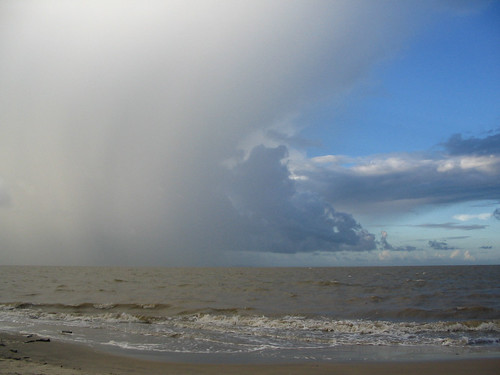 This is what it looks like when rain approaches. Credit: Arria Belli
This is what it looks like when rain approaches. Credit: Arria Belli
During both weekend days, the sky was a great big grey mass of cloud, which intermittently unleashed its load of rain upon us
Now and then, there would be a gap, the sun would shine for a few minutes, turning outside into a sauna, and then the next wave of grey mass would roll in. I had scheduled a bird-watching excursion and so ended up spending two drenching hours in an open longboat on the Sinamary river. Surprise, surprise: you can freeze even if the temperature is 25C!
Monday, 30 January
On Monday, the final dry run and leak-tightness test was made for the MON (a mixture of Nitrogen Tetroxide and about 3% Nitric Oxide) fuel loading. Once this was done, we held the final meeting to authorise the loading. This was followed by an inspection of the set-up, checking the procedures and verifying the dry-run results.
Each fuel hose is labelled at both ends and the diagrams have the same nomenclature, so the check is reasonably straightforward. It would be great if the average item of home electronic equipment was equally well labelled upon delivery!
While the set-up is being inspected, another team takes the opportunity to move ahead on other tasks.
In parallel, another meeting is ongoing. Specialists are going through the hour-by-hour activities planned for the last 19 working days of the ATV launch campaign.
These last 19 working days take place in another facility, the BAF, and start as soon as ATV has been integrated, in vertical position, on top of the Ariane 5 launcher.
This ‘POC’ phase seemed quite remote while we were fuelling but now it is just around the corner! Transfer to BAF, and the first day of the POC phase, is set for next week on Tuesday, 7 February.
[POC refers to ‘Plan d’Opérations Combinées’ – basically the final pre-launch phase when the Arianespace launch authorities assume management over ATV as it has now become simply the payload for Ariane – Ed.]
Edoardo Amaldi is not just carrying fuel, water and air/oxygen; it is also carrying dry cargo. This cargo is made up of bags containing food, clothing, experiments, spare parts, etc. In total, 1600 kg of dry cargo was loaded in November, leaving space for 575 kg of what we call ‘late load’ items. NASA defines this late cargo and, like any intelligent logistics manager, wants to have maximum flexibility with respect to what finally gets lofted to the ISS.
Cargo shipping from Europe and NASA
Dry cargo is therefore shipped to French Guyana for loading on board ATV. Teams from French industrial support contractor Endel receive cargo on behalf of CSG for all launches from Kourou, so they take care of customs clearance and transport to building S5.
Once it arrives, we do an inspection (checking for damage of the containers, check shock recordings / temp recordings, open the pallets, check the contents, move each bag into the clean room where one layer of plastic is removed and then the bag is stored on a trolley, to wait for the actual loading). All this takes time and people, so we include this in the daily activity planning.
All this is pretty straightforward but… We are dealing with international transports and the same rules apply to space cargo as to any other cargo. Namely, items to be sent to space need to be accompanied by lots of paperwork. Airway bills, customs declarations, certificates of all kinds, & etc. Paperwork not in order? Then the item does not get shipped.
Then there is the issue of how it will be transferred. Plane? Ship? Many factors determine this. The easiest connection is actually to route everything via Paris (even if it comes from Miami).
Air France operates the flight from Paris (Orly) to Cayenne, French Guiana, and they decide what goes on in what order. Never mind that all the documents state that cargo will arrive 30 and 31 January (which was the planning for this week) – that is only a statement of intent.
On Monday, I learnt that the cargo planned for that day had arrived Sunday and the Tuesday cargo was arriving Monday… except that some items were not going to arrive at all due to some missing forms… So on Monday, instead of receiving three pallets of goods we received nine pallets. This kept us busy a large part of the evening.
But team work is everything and everybody pitched in…
Happy cargo manager rolling his load into the storage room… looks a bit like your local baker, No?
Keeping up with this is almost a full time job.
Yesterday, Thursday, 2 February, I learnt that half of the cargo planned for today, Friday 3 February, was probably coming Saturday – and the cargo planned for Monday… Oh well, no point in thinking about that now, it will probably change before then!
Tuesday, 31 January
MON fuelling started at 06:00, with the work crews dressed in the so-called SCAPE (Self Contained Atmospheric Protective Ensemble) suits. 3,362 kg of MON were to be loaded and this was expected to take roughly 10 hours, after which the fuelling hoses and the vapours need to be taken care of (this equally hazardous operation takes an additional six to eight hours). Just like MMH loading, this is done in three shifts.
From my office I can follow what is going on via remote camera but once the valves are open nothing much happens. The person in the S5B building work area has to sit in front of a screen and monitor the transfer; it sounds easy, but is physically very tiring.
The same picture could be taken at intervals throughout the day on Tuesday. Note that this is precisely what we want! The more boring, the better…
Wednesday, 1 February
When I arrived at CSG on Wednesday morning, the actual fuelling is long since over and the clean-up operations are in progress.
The day then continues with various meetings and a myriad of detailed work associated with this part of the campaign. The sheer logistics are impressive.
Contaminated equipment must be moved away from S5B to other facilities. ATV scaffolding must be moved back into S5B to enable the final S5B activities, the container used to transport ATV to the BAF must be checked and moved into place and various bits of the ground support equipment moved from one place to another, all while respecting working hours, safety regulations and access to shared transportation resources.
Needing more time
During the late afternoon, the on-site Astrium representative came to see me. They had done another round of detailed planning and realised that we needed to find six more hours between Saturday, 4 February at 22:00 and Monday, 6 February at 06:00.
As you can imagine, there were not that many choices.
We filled in the necessary paperwork requesting yet another (extra) shift and I contacted CSG/Arianespace to give them this piece of ‘good news.’
Normally, working on Sundays is not allowed but as you get towards the end of a campaign everybody does their utmost to ensure that the launch schedule can be met.
While we were busy with this in Kourou, our colleagues were at the Final Acceptance Board (FAR) being held at ESTEC in The Netherlands. This is a major ESA review to ensure that the vehicle is actually ready to fly.
Happily, [by week’s end] the FAR found no open technical points blocking the mission; all still-open work tasks are correctly included in the final planning and scheduling, & etc.
Yet another important milestone on the path to the final countdown!
Thursday, 2 February
Busy day indeed!
The (extra) shift for Sunday was made official and a decision promised before noon. During the morning, we did an end-to-end test with ATV-CC, in which ATV was actually connected to the mission control systems in Toulouse.
This ensures that the control centre can send data to us here at CSG. This capability is required on the day before the launch when they send the last and final version of the initial mission plan to be stored on board. This is the plan – the autonomous sequence – that Amaldi‘s computers will begin executing from the moment we enter into the final countdown until the solar arrays are deployed after separation (plus a few other actions).
This last data is received by the ATV Electrical Ground Support Equipment (EGSE) and is then loaded into the computer memory on board ATV.
After some initial problems, which were quickly resolved, the test went smoothly and was successfully concluded. Another step in the right direction.
In parallel with this test, a meeting was being held to carefully go through all the remaining work that needs to be done before moving ATV to the BAF, i.e. between now and Monday, 6 February, in the afternoon.
No matter how eager we are to get to the next step, we must be absolutely sure that nothing is forgotten. When we work in BAF, on top of the Ariane launcher, working constraints are even more numerous, and you cannot simply add extra tasks into the sequence of preparations.
Sunday shift is approved
You know you are in the right job when receiving an OK to work also on Sunday makes everybody happy!!
The rest of my day was spent winding up my email and paperwork, paying our bills for the month of January and packing my gear.
My part in the ATV Edoardo Amaldi launch campaign is now over! Time to leave French Guyana and head for Toulouse (via The Netherlands) for final preparations at the ATV Control Centre.
More news will follow…
– Charlotte

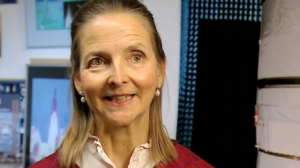

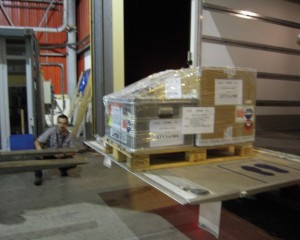
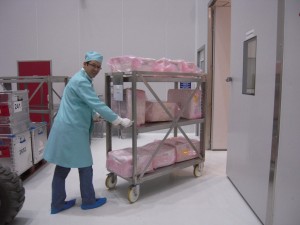

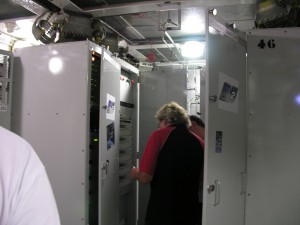
 Automated Transfer Vehicle page
Automated Transfer Vehicle page ATV blog archive
ATV blog archive
Discussion: no comments